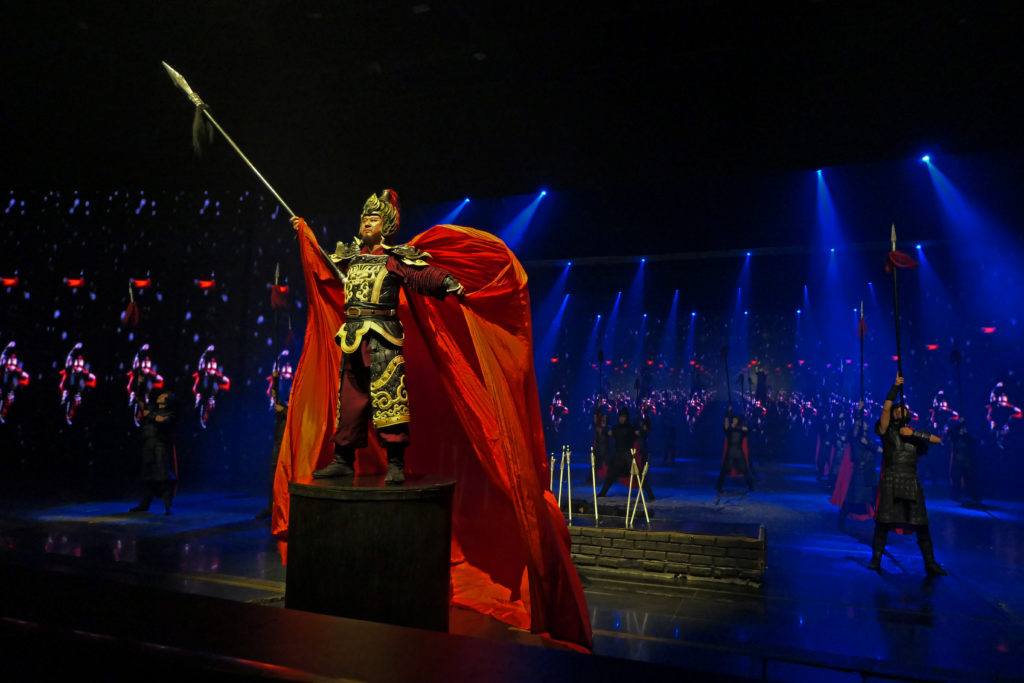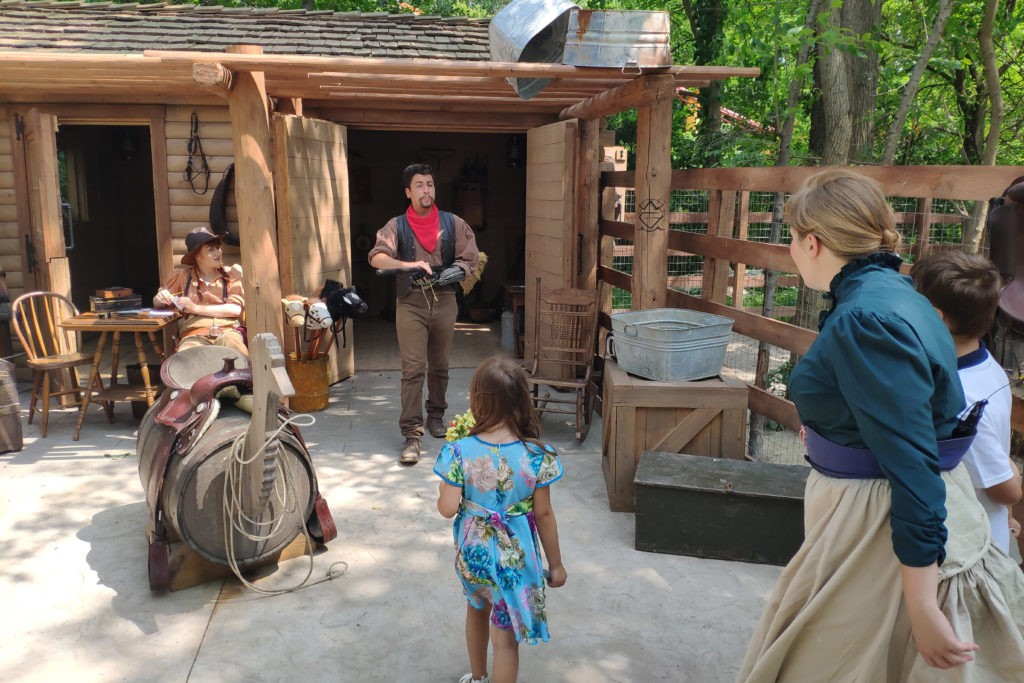Five lessons from my large-scale study
By Carissa Baker, Ph.D.
ABOVE: The Fairytale Tree at Efteling theme park in The Netherlands – All photos courtesy of the author and her spouse
As a child growing up in Los Angeles, I regularly visited Disneyland, Knott’s Berry Farm, and Universal Studios Hollywood. I was awed by the attractions at the parks and they left a lasting impression. What I did not understand at the time was that elements of storytelling were what so appealed to me, whether narrated or environmental. Fast forward to now, where I have two college degrees centered on stories, a Ph.D. where most of my research is focused on theme park narratives, and classes I teach that emphasize the power of storytelling for great guest experiences. The stories in theme park spaces that I encountered over the years were major inspirations for my career path.
One of my large-scale research projects involved determining the characteristics of theme park narratives and how they have changed over time. In my study, I examined narrative attractions at the top 60 parks (by attendance) in three main regions (USA, Europe, Asia); to compare these to an emerging market, I conducted the same analysis on the parks in the United Arab Emirates. A total of 871 attractions were studied to determine common attraction types, source material, narrative techniques, and technologies. Results were divided into time periods, with the early industry, the maturing industry, and the contemporary industry represented. The following points are five lessons I learned from this lengthy study:
Lesson #1: Dark rides and stage shows are powerful storytellers
Attractions that tell stories range from a walkthrough with static scenes to a nighttime spectacular with projection mapping and pyrotechnics. There is good variety in theme parks globally, but the two most pervasive types of attractions are dark rides and stage shows. Many stage shows are couched in the theater tradition with overt narration and stories told through musical numbers, dance, and stunts. Shows can be small and intimate, as the ones at Disneyland’s Royal Theatre; grand, such as Romance of the Song Dynasty at Hangzhou Songcheng; or epic, like Cinéscénie at Puy du Fou. Stage shows are appealing to visitors because of their human element. Since they are often more temporary and may be held in the same venues as previous efforts, some parks have produced dozens of stage shows over the years, especially as new intellectual properties (IP) appear.

Dark rides, a unique feature in amusement parks and themed entertainment, use motion and environmental scenes to create micro storyworlds. Some of the most compelling experiences at parks are dark rides. Whether simple or cinematic, dark rides appeal to guests’ imaginations and the desire to be inserted in a story. Dark rides might be drawn from culture, as of those in the Fantawild Oriental Heritage parks (ranging from local legends to popular epics like “Journey to the West”); important literary stories, such as rides based on One Thousand and One Nights, Peter Pan, or Alice in Wonderland; fairy tales, as in The Flying Trunk at Tivoli or Disney’s Fantasyland classics; IP such as JUSTICE LEAGUE: Battle for Metropolis at several Six Flags parks; or original stories such as Disney’s Mystic Manor, Holiday World’s Gobbler Getaway, or Six Flags Over Georgia’s Monster Mansion. Parks leverage stage shows and dark rides as powerful vehicles for storytelling experience.
Lesson #2: Setting is the most common and important narrative technique
When looking at narrative techniques, I studied components like the prevalence of allusion, narrators, plot, symbolism, and other terms. Perhaps not surprising because of the theme park’s inextricable tie with space, it is settingthat turned out to be the most common, followed by scenes and visual storytelling. One of the attributes that distinguishes a theme park from other forms of entertainment is that element of movement, of physical and sensory immersion. When traversing Dollywood’s Craftsman’s Valley, a guest is a visitor to the Smoky Mountain environment and culture. The immersive and interactive theater production of Ghost Town Alive! at Knott’s Berry Farm has a fun storyline and interesting characters, but it is situated in the town of Calico and the narrative revolves around the place. Themed space is what many guests desire, as they want to live inside of a different context or world for those hours they visit. It has been especially impactful for fans who can now inhabit fantastical places such as the Wizarding World of Harry Potter at Universal Studios parks, or Pandora at Disney’s Animal Kingdom. While entertainment technologies can increasingly be brought into the home (3D, VR, drones, even projection mapping), the dimensional aspect of the theme park cannot truly be replicated.
Lesson #3: IP has been the go-to for 60 years
Stories in theme parks are drawn from various source material, from culture to history to science and technology. By far the most frequent source, however, would be intellectual property, generally novels, movies, and video games. The study shows that IP-based experiences have always been prominent. When Disneyland opened in 1955, for example, it relied on synergy with Disney movies and television shows to draw guests to the site. Sometimes a story is repeated in a theme park iteration, for instance a stage show recapping a particular film. Other times, it is a new story in that world, such as E.T. Adventure. Many times, stories from familiar properties are told with the shift that now the guest is involved in that story. Attractions may bring new audiences to a property, for instance the Arthur-themed land at Europa-Park, the Tron Lightcycle Power Run at Shanghai Disney (and soon Magic Kingdom), or Universal’s Waterworld-based shows. Attractions using IP allow for less exposition and backstory work. They draw on appealing stories that guests already know and may have an emotional connection to.

Lesson #4: A variety of storytelling techniques is best
Parks are filled with stories, and the most successful parks have stories told in a number of ways. Theme parks might have explicit narrative, where the story is told to the guest through verbal or written means as in The High in the Sky Seuss Trolley Train Ride at Universal’s Islands of Adventure. They may have implicit narrative, where the story is told to the guest through visual or environmental means such as the Tree of Life Awakenings at Disney’s Animal Kingdom. Parks may also have interpretive narrative, where the meaning of a story is meant to be determined by the guest as in Efteling’s Dreamflight. In the same park, stories can be told through varying mediums from architecture to film, animatronics to music. Another trend has been the addition of storylines in parks that are stereotypically less concerned with storytelling. This can be with thrill rides and even roller coasters, with a few recent examples being Cobra’s Curse at Busch Gardens Tampa or Mystic Timbers and Orion at Kings Island. Variety allows guests to enjoy stories in different forms and not get fatigued, and now many smaller parks and places like museums and heritage sites employ similar techniques to stay competitive.
Lesson #5: Storytelling reflects changes in society
Changes in theme park narratives over time are due to industry shifts, design paradigms, new technologies, and changes in visitor preferences. One of the crucial aspects of shifts in attraction design is because of transformations in society, some of which were also affected by technological innovation. Gamification became a part of sectors from education to themed entertainment, including interactive dark rides (such as those of Sally Dark Rides) and quests in the vein of MagiQuest at Great Wolf Lodge Resorts. Interaction, role-playing, and immersion became greater values in media in general, which trickled to themed entertainment with such experiences as Forbidden Frontier at Cedar Point or Evermore Park. Similarly, transmedia storytelling, or extending storylines across multiple channels and platforms (books, films, video games, etc.), became the desired way for consumers to connect to their favorite brands and IPs and gain the affordances of each media type. This has led to theme park lands (e.g. Universal’s Wizarding World of Harry Potter or Disney’s Star Wars: Galaxy’s Edge) being conceived of as extensions of synergistic storytelling across large narrative networks. The trend has encouraged parks to create transmedia extensions of their attractions, for example Europa-Park’s game and website about the Voletarium ride or Efteling’s television productions. Attractions mirror changes in society, and the industry itself can have influence on entertainment desires by continuing to raise the bar for enjoyable experiences.
Through my study I learned many things, but one vital result for my work has been that storytelling is a major component of successful theme parks over time and around the world. There may be a debate about how to tell stories and what level of stories to add to attractions, but storytelling itself is widespread and central to the most impressive experiences. To stay competitive, operators employ themes and stories that engage the imaginations of guests beyond that of only thrills. They tell meaningful stories in diverse ways, and some theme park fans embrace this through remembering, recreating, or co-creating these stories at home. In the future, I will conduct this study again to see where parks have gone and the new ways that stories will be expressed. Looking at the progress illustrated in the study, it is clear that in the future, there will be new and unexpected ways to create superb narrative experiences. I look forward to seeing what the industry delivers next!

Carissa Baker ([email protected]) received her Ph.D. in Texts and Technology from the University of Central Florida. Her primary research focuses on narratives in the theme park space. She presents at academic conferences or themed entertainment industry events and publishes interdisciplinary work on theme parks. Dr. Baker has taught and researched in China in addition to being a visiting scholar at Breda University of Applied Sciences in the Netherlands. She is an Assistant Professor of Theme Park and Attraction Management for the Rosen College of Hospitality Management at the University of Central Florida in Orlando, Florida.






